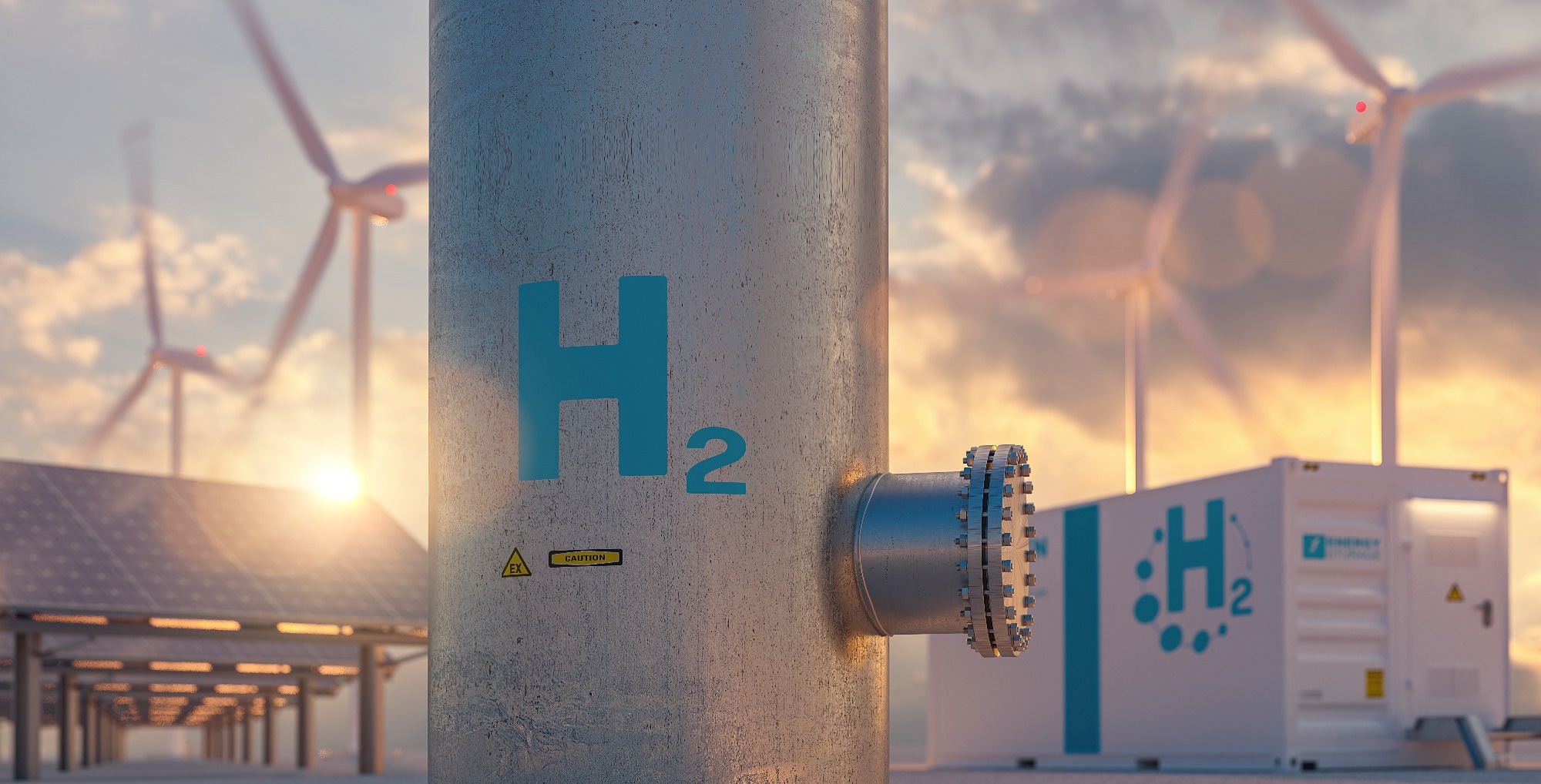In the battle against climate change, Korean researchers have achieved a groundbreaking milestone in clean energy technology. A multi-institutional team has developed an innovative catalyst screening method using artificial intelligence (AI) to address the pressing need to transition from fossil fuels to sustainable alternatives. This novel approach holds the potential to significantly reduce the cost of hydrogen fuel cells, a key player in clean energy solutions.

Image Credit: r.classen/Shutterstock.com
Hydrogen fuel cells have long been recognized as a viable, clean energy source. These fuel cells produce electricity through a process that emits only water, offering a promising alternative to traditional combustion methods. However, the widespread adoption of hydrogen fuel cells has been hindered by the high cost of platinum catalysts. These catalysts, essential for the oxygen reduction reaction in hydrogen fuel cells, have made the technology economically unfeasible for mass deployment. Research, development, and infrastructure are therefore needed before hydrogen fuel cell vehicles can be widely adopted.
In a groundbreaking development, a research team has managed to effectively tackle a critical challenge in hydrogen fuel cell technology. Traditionally, hydrogen vehicles rely on proton exchange membrane hydrogen fuel cells (PEMFCs), which require expensive platinum catalysts for the oxygen reduction reaction at the anode. This high cost has impeded the widespread adoption of hydrogen vehicles, making them economically unfeasible.
However, a new avenue has emerged as researchers have explored the potential of elemental combinations and compositions, paving the way for an innovative and cost-effective approach to catalyzing the oxygen reduction reaction. This breakthrough represents a significant step toward reducing the world’s reliance on fossil fuels and showcases the power of AI in reshaping the clean energy landscape.
The Environmental Promise of AI in Catalyst Screening
Researchers in the Republic of Korea have pioneered an innovative method of catalyst screening using artificial intelligence (AI), leading to the creation of a groundbreaking catalytic material based on a ternary element-based alloy (Cu-Au-Pt). This new material proves to be more economical than platinum and has demonstrated performance levels twice as high as pure platinum catalysts.
The AI model, named Slab Graph Convolutional Neural Network (SGCNN), accurately predicts the binding energy of adsorbates on the catalyst's surface. SGCNN is an evolution of the Crystal Graph Convolutional Neural Networks (CGCNN) model, traditionally used for predicting the bulk properties of solid materials.
Overall, there is no significant difference between the prediction of bulk properties and surface properties, which is why it was possible to evolve the model for this novel application. The main advantage of the AI model lies in its ability to reliably and accurately predict the surface properties of a catalyst in a short time frame. This facilitates the efficient screening of catalysts so that scientists can quickly select ones that have material stability, high performance, and are cheap.
Using this method, the research team explored the potential of nearly 3,200 ternary candidate materials within a single day's work. In contrast, employing the prior technology of density functional theory (DFT) adsorption energy simulation calculations, this extensive exploration would have demanded years of effort.
Cu-Au-Pt Ternary Alloy Catalyst
Through rigorous experimental validation, a selection of 10 catalysts exhibiting superior efficiency to platinum counterparts led to the development of a groundbreaking ternary alloy catalyst comprising copper, gold, and platinum (Cu-Au-Pt). This catalyst not only proves to be more economically viable than pure platinum alternatives but also boasts a kinetic current density twice that of conventional platinum catalysts. Extensive stability testing involving over 5,000 trials demonstrated the remarkable durability of this catalyst.
With more refined AI modeling techniques, researchers are optimistic about the emergence of catalysts featuring exceptional properties. This could result in the development of new catalysts with favorable properties, such as high performance at a low cost. This achievement not only redefines the possibilities of hydrogen fuel cells but also underscores the pivotal role that AI plays in shaping a greener, more sustainable future.
References and Further Reading
- Park, Y. et al. (2023) ‘Machine learning filters out efficient electrocatalysts in the massive ternary alloy space for fuel cells’, Applied Catalysis B: Environmental, 339, p. 123128. Available at: https://www.sciencedirect.com/science/article/abs/pii/S0926337323007713.
- Using AI to develop hydrogen fuel cell catalysts more efficiently and economically (2023) KIST Korea Institute of Science and Technology. Available at: https://eng.kist.re.kr/eng/newscenter/latest-research-news.do?mode=view&articleNo=9473 (Accessed: 19 October 2023).
- Fuel Cell Basics (no date) Energy.gov. Available at: https://www.energy.gov/eere/fuelcells/fuel-cell-basics#:~:text=Polymer%20electrolyte%20membrane%20(PEM)%20fuel,to%20meet%20shifting%20power%20demands (Accessed: 19 October 2023).
Disclaimer: The views expressed here are those of the author expressed in their private capacity and do not necessarily represent the views of AZoM.com Limited T/A AZoNetwork the owner and operator of this website. This disclaimer forms part of the Terms and conditions of use of this website.